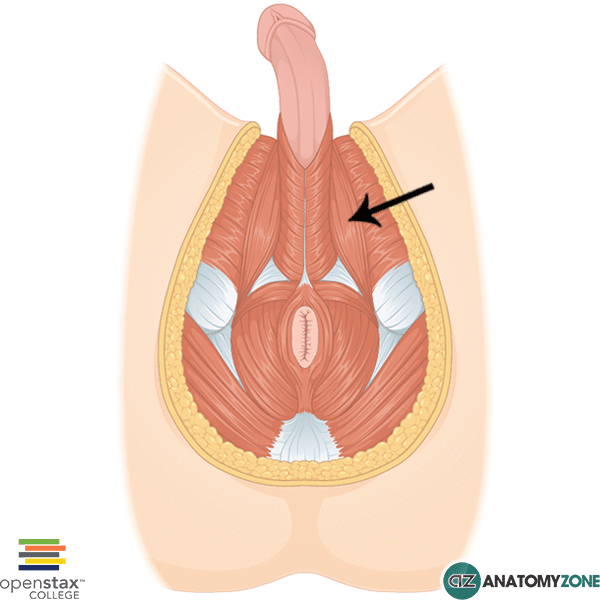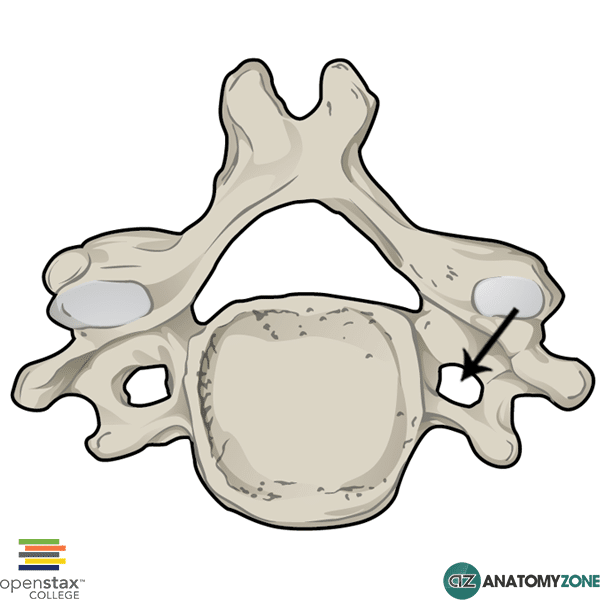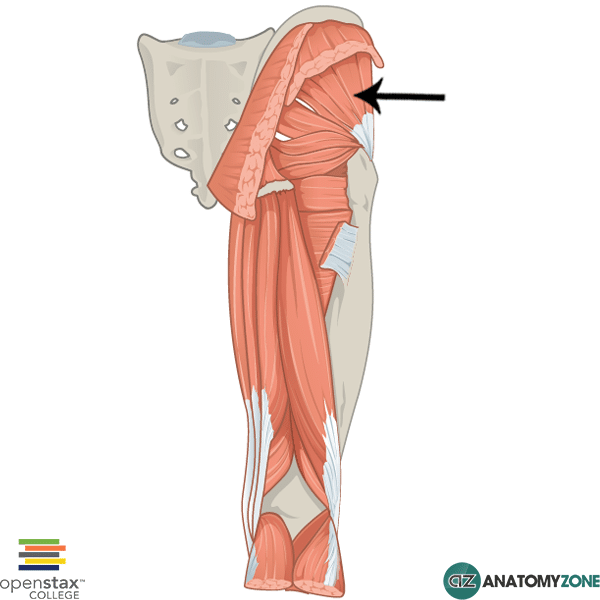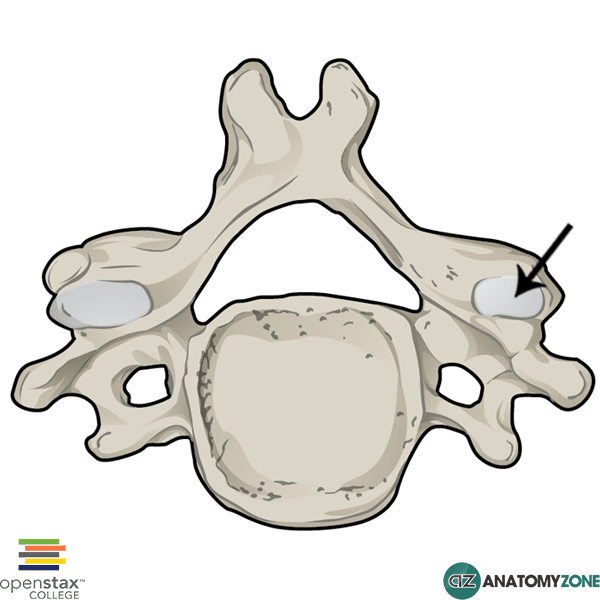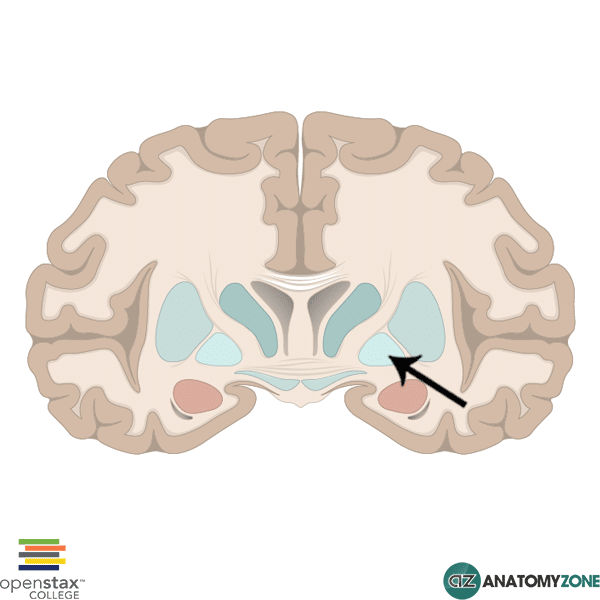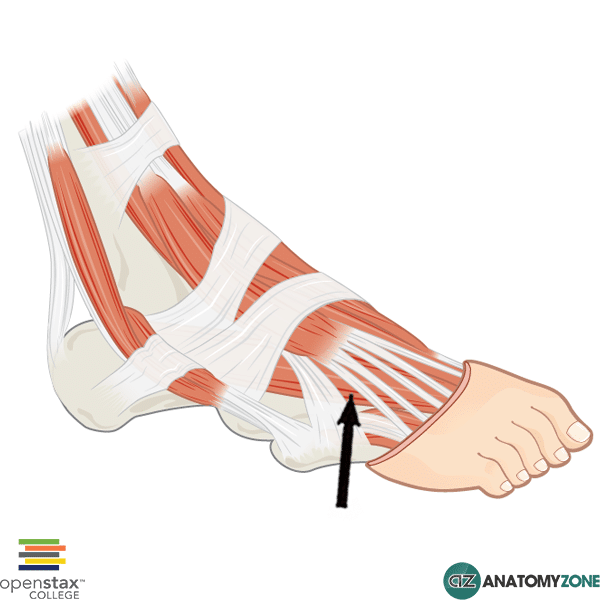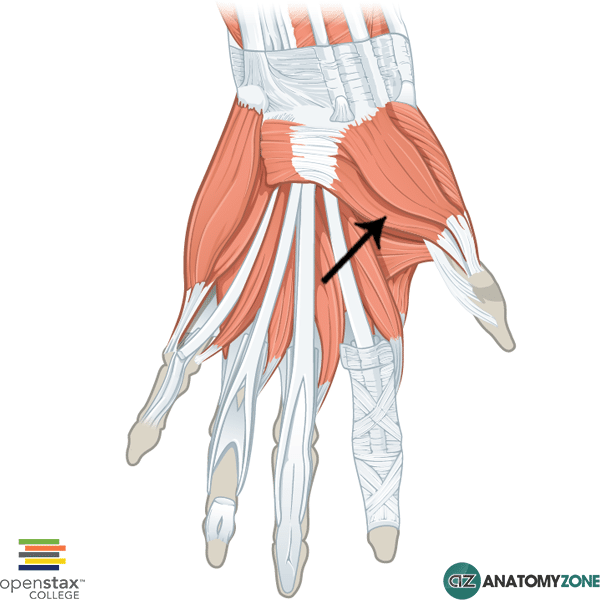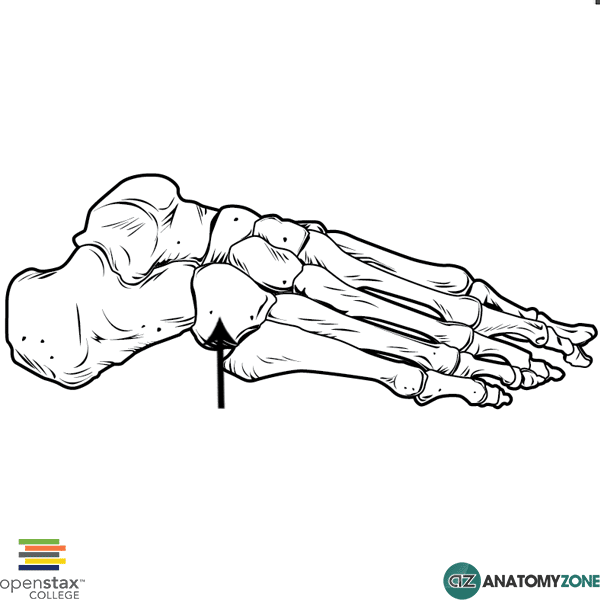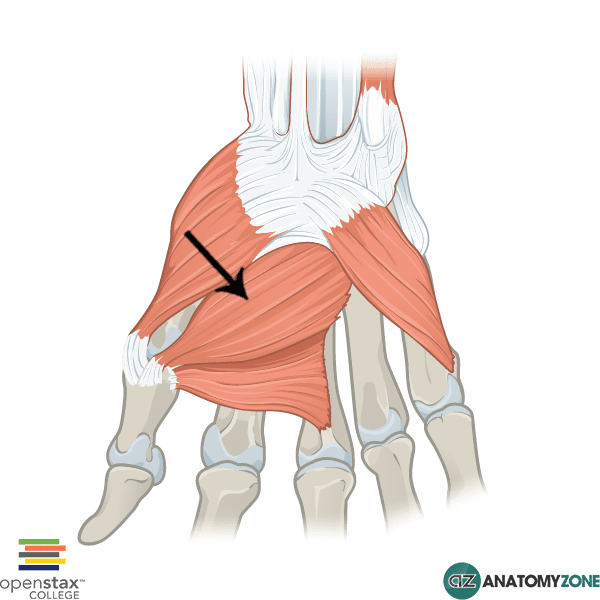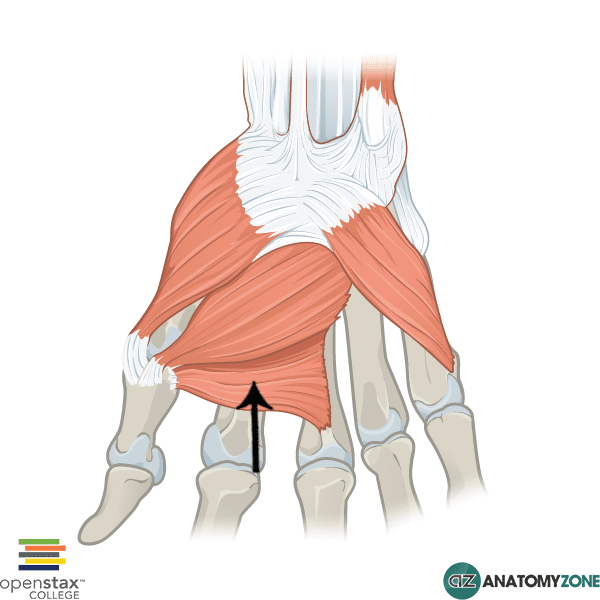The structure indicated is the adductor pollicis muscle of the hand.
The adductor pollicis muscle belong to the intrinsic group of muscles which act on the hand. The intrinsic muscles include the following muscles/groups:
- Thenar group (act on thumb)
- Hypothenar group (act on little finger)
- Adductor pollicis
- Lumbricals
- Interossesus muscles (palmar and dorsal interossei)
- Palmaris brevis
All the intrinsic muscles of the hand, except the thenar muscles and the lateral two lumbrical muscles are innervated by the deep branch of the ulnar nerve. The thenar muscles and the lateral two lumbrical muscles are innervated by the median nerve. A useful mnemonic for remembering this is MEATLOAF. “MEAT” refers to the Median nerve, and LOAF refers to the muscles which it innervates: Lateral two lumbricals, Opponens pollicis, Abductor pollicis brevis, Flexor pollicis brevis.
The adductor pollicis muscle consists of two heads:
- Transverse head
- Oblique head
As the name suggests, the adductor pollicis serves as a powerful adductor of the thumb. In addition it also assist in opposing the thumb.
Origin: Oblique head – capitate and bases of metacarpals 2 and 3. Transverse head – Metacarpal 3
Insertion: Base of proximal phalanx and extensor expansion of thumb
Action: Adduction of thumb
Innervation: Deep branch of ulnar nerve
Learn more about the anatomy of the hand muscles in this tutorial.




